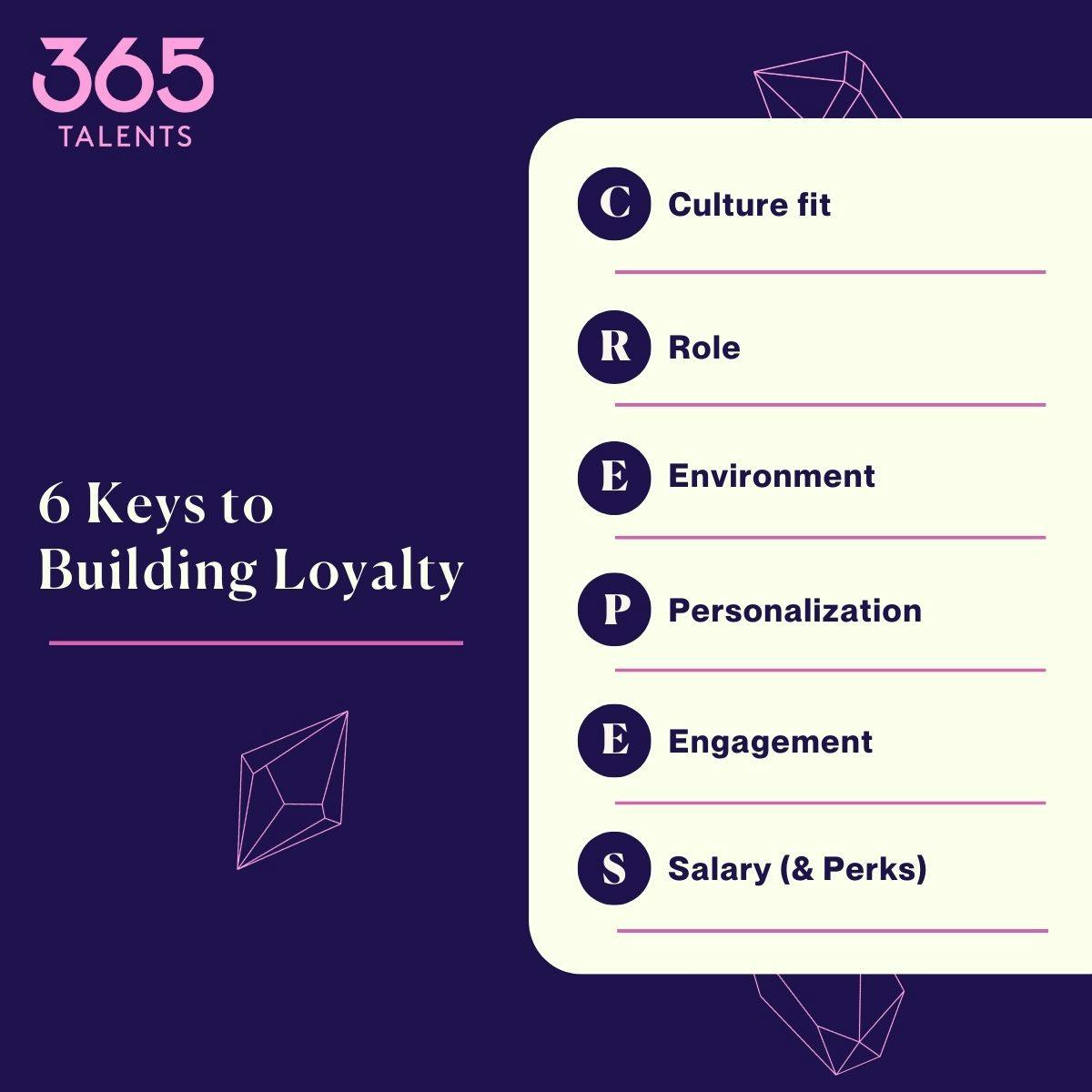6 keys to building loyalty at your company

From The Great Resignation to quiet quitting, it’s undeniable that the question of why (and how) people leave their jobs and what can be done to help them stay is now a persistent and consistent theme in HR circles.
And for good reason: For too long, the talent experience has been neglected as companies chase other growth targets and retention rates have suffered at both large organizations of 1000+-employees as well as startups in hypergrowth. Yet when your people feel empowered and invested in their career paths, they are more likely to be able to see a future for themselves with your company.
Fostering loyalty is only one ingredient in the recipe for employee engagement and empowerment, but it is a remarkably powerful and self-sustaining one.
To help you learn and remember the essential levers for building loyalty, we’ve turned to the recipes of our motherland.
When you think of employee loyalty, think of CREPES.
Let’s dig in.

The 6 levers of loyalty, explained by "crepes"
Adapted from the webinar “"Comment fidéliser ses talents en hyper croissance ?” given by 365Talents Head of Marketing Julie Asselin in May 2022.
1. C is for culture fit
When you start attracting talent and when you start asking questions in interviews, check the culture aspect.
Some people who are coming in will be there just to get a paycheck and they don’t necessarily share the company culture. This isn’t necessarily a problem for job performance, but it is for loyalty: A company's values, mission and culture is one of the primary levers of loyalty.
If you believe in the company's mission, if you know that you have the same values as your colleagues, well, you're bound to be more attached to the company. So test the culture fit with questions during interviews. For example, do you have friends at work? How do you see yourself as a colleague? Just try to find the right questions that will really reflect your culture.
2. R is for role
In the period when you're recruiting your talent, define the role and the position with the managers and put in place something that is clear and challenging. The role should not just be an exact copy of what the person was looking for, but rather offer a vision for their growth: Define something with challenges and rewards. Same for the name of the position. All of this will help the person to feel valued and to see a future with your company through their role, challenges and rewards.
3. E is for environment
The third element is the managerial environment and it's very much linked to culture. It's how your managers in your teams are going to enable empowerment, i.e. to help people become autonomous. To guide, but not to micro-manage. We know that micro-management is a hindrance to development and even the reputation of your company, so create a managerial environment that is very healthy and really helps the development of skills.
4. P is for personalization
This brings us to the fourth point, which is one of the most important: Really think about the personalization of professional paths. So, what does that mean?
Once you've recruited someone, how do you project them into careers?
This does not mean sending them after their boss's spot or adding a new senior suffix to their title every three years. It is rather how, according to their interests and their experiences, we can direct them on a unique, fulfilling professional path. This involves looking at the different things you can offer within the company and, for HR, means not necessarily looking for external recruitment when the position needs filling.
The personalization of career paths is also where managing your employees starts to get a little more complicated, especially when you go from 100 to 200 or 300 people.
At 365Talents, we don't believe the only way is up. That's why our decentralized talent mobility solution allows your people to chart a course for their future at work that moves vertically or laterally according to your mobility rules. We disregard the "classic" career path model to unleash creativity in how you and your people envision their growth and professional development.
Through the ability of our AI to recognize skills, experiences and interests self-declared by your people in their own words and our smart matching technology that offers suggestions to both HR and employees, mapping skills and workforce planning has never been this empowering or engaging for your people.








5. E is for engagement
The fifth element is really all about creating engagement through commitment and routines. You surely have some great examples of how you've maintained commitment, whether it be in hybrid work or team routines. Do we see each other every month, every three months, every off-site?
It's very much linked to the culture, but all that will maintain a spirit of cohesion and of group. Loyalty is fostered through belonging, through feeling like you are part of something where you feel good.
6. S is for salary (and perks)
The last one is salaries and benefits. The package you offer has to be competitive with the market otherwise even the most loyal employee will leave. But if you just find yourself using that single lever, you won’t succeed at creating true loyalty.
For example, many managers will say, ah, Jean wants to leave, I'm going to offer him more money so I'm sure he'll stay. But from the moment that someone has told you that he wants to leave, it's not necessarily just a question of money — there are other things and a raise will only delay the inevitable.
There may be other things that Jean wants to do or he may have concerns with the other things on this list (environment, personalization, engagement) so use salary and benefits strategically. It may be important for recruitment, but for retention, it is not necessarily the most powerful tool.
How to engage your employees through HR marketing
Creating loyalty is an important way to create employee-driven engagement and build your employee brand — that is, the image and reputation of your company as seen and produced by your people. But loyalty and employee branding can be aided through the efforts of HR marketing as well.
Within the context of a great resignation and/or great attraction (depending on your point of view!), working on your employer/employee brand has many advantages for you:
- Strengthening your image
- Improving your appeal thanks to the efficiency of your sourcing
- Retaining your employees and reducing your turnover
- Boosting your employees’ engagement
In the creation of an employee brand, your employees are naturally your best ambassadors.
HR marketing is one way to engage your employees in the creation of your company image and reputation.
How do you engage with your employees?
As a first step, you need to understand their expectations. They might not be at all the same as when they first joined the company. Preparing questions and taking the time to have discussions with them are two essential steps to start with. Also, look at the employer brand actions carried out by other companies or studies published on this topic.
For example, did you know that the three most important criteria for existing employees are:
- A pleasant, caring working environment
- Mid-term career opportunities
- Good communication of information between employees and managers
Now doesn’t that align with our CREPES view of loyalty?
This means that there are many possibilities for improving your employees’ experiences, while building loyalty and encouraging engagement.
Fulfill your promises
Working on these employer brand actions is essential, but keeping your promises once a candidate has been recruited is even more important.
Once they have joined the company, their experience has only just begun. And if the reality of practices at your company is inconsistent with your employer brand actions, the process will be counter-productive.
You will then expose yourself to the risks of “quiet quitting” and high turnover…
Engage employees in strategy
An HR marketing strategy cannot be created without involving managers and employees, regardless of their departments or seniority.
If the HR team is leading the process, these are indeed your employees and those primarily affected. Therefore, present your ideas and actions to volunteer employees. You will see that they are delighted to contribute to your company image, especially once you have put in the work to create a company that inspires loyalty.
Ready to chart a new course for your people at work? To learn more about building loyalty and engagement at your company, talk to our team today.
Uncover more HR insights









